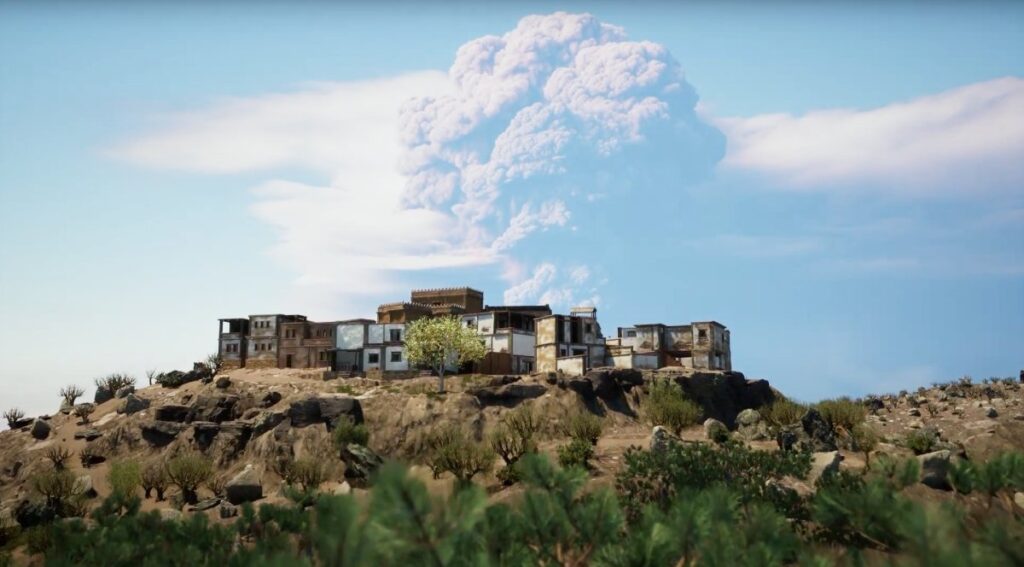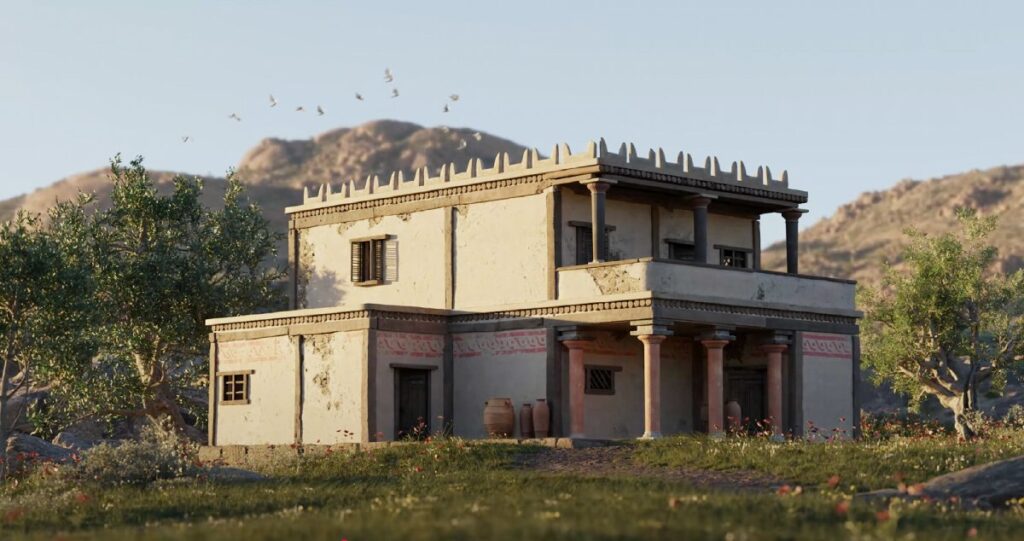The Sissi site is the subject of a reconstruction and visualization project that leverages cutting-edge techniques and employs Unreal Engine as a central platform. Just as detailed site surveys are fundamental to understanding the physical remains of past civilizations, Unreal Engine allows the project team to transform these findings into immersive and interactive digital experiences. This is an ongoing project developed by game design students at the Media University in Cologne, under the guidance of Professor Sebastian Hirsch.
The project’s workflow begins with data acquisition from the archaeological site. High-resolution photography, Lidar, and Photogrammetry is used to generate accurate 3D models of excavated areas and individual architectural components.
These models and data sets are then imported into Unreal Engine, where the team of game design students and archaeological experts collaborate to reconstruct the site’s former appearance based on available evidence and scholarly research. A key component of this process is a procedural building generator created by Cedric Weise, which significantly eases the creation of larger settlements and expands the scale of the virtual reconstructions. This generator allows the team to efficiently create historically plausible building structures based on archaeological data and architectural principles. Reconstruction involves integrating architectural remains within a reconstructed landscape, utilizing geological data, digital elevation models, and simulated vegetation to recreate the original environment. Notably, the project aims for a high degree of environmental fidelity; the area of the landscape being reconstructed has a 15-kilometer diameter and is designed to be an accurate representation of the Malia Bay on Crete. It also involves reconstructing the original materials and surface textures of buildings and artifacts, informed by archaeological analysis of surviving fragments, historical records, comparative studies, and the insights gained from the archaeological evidence.
The ultimate goal of this project is to create a fully immersive Virtual Reality (VR) experience, implementing interactive elements such as guided tours, annotated models, and simulations of daily life, allowing users to actively explore the site and gain a deeper understanding of its history and culture. The team aims to provide a compelling and informative virtual experience that fosters a greater appreciation for our shared cultural heritage. This collaborative effort between archeology and interactive media design, demonstrates the exciting potential of interdisciplinary approaches to archaeological visualization.
Seb Hirsch
Visual Effects & Motion Design
www.sebhirsch.com

